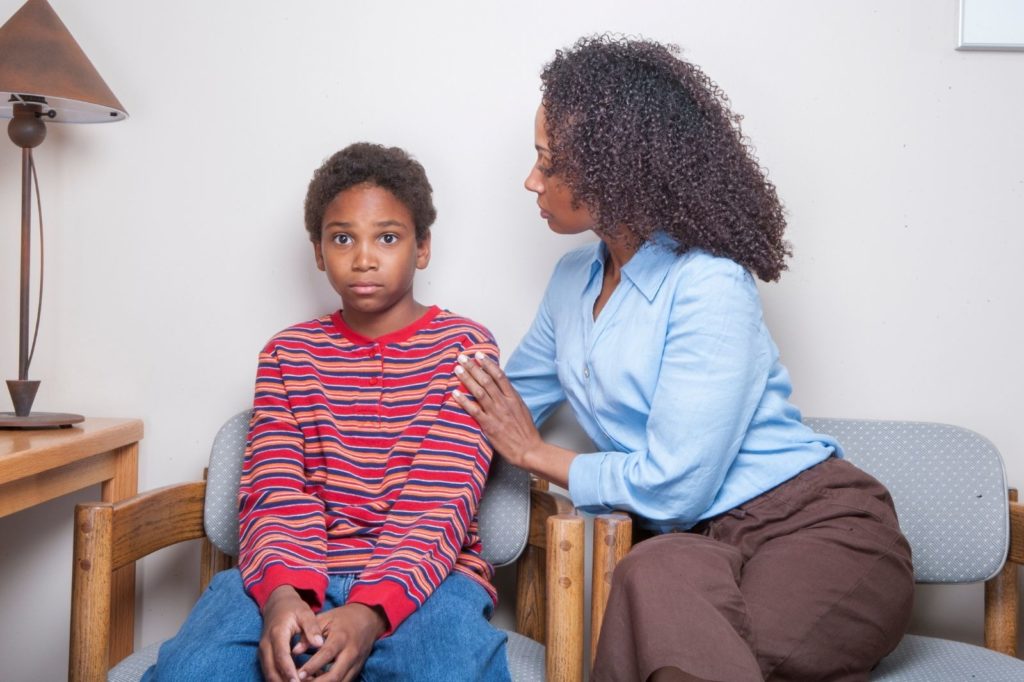Suicide. It can be a scary and upsetting topic, and for some of us it is hard to talk about. The reality is that many people, at some point in their life, at least consider what the world would be like without them. Stress, uncontrollable life circumstances, and many mental health conditions can contribute to a person contemplating ending their life. For some children, feelings of humiliation, rejection and anger may lead to suicidal thoughts or behaviors that the child or adolescent may not otherwise experience. Regardless of the reasons, suicidal thoughts are always a sign that professional help is needed and should always be taken seriously.
Suicidal thoughts can generally be categorized in two separate forms, passive and active.
Passive
Passive suicidal thoughts are perhaps the most common. They are characterized by a general and typically vague feeling, thought or desire. They can take the form of wishing that something bad would happen that would end the person’s life. Passive suicidal thoughts are devoid of a specific plan to harm oneself, and there is no personal intent to do so. Some examples might include, “I wish I would get hit by a car…It would be ok if I didn’t wake up tomorrow morning…etc.” This sort of thinking expresses a wish for some sort of suffering, usually emotional in nature, to end, and the person may not know how to stop the pain in another way. Passive suicidal thoughts are an expression that life struggles are overwhelming to a person and signify that the person needs to seek professional help. If they are not responded to, these types of thoughts can develop into active thoughts.
Active
Active suicidal thoughts require an immediate response. They are characterized by a person having a desire to end their life with a specific plan and intent to do so. The risk is even greater if the person has a means to accomplish their plan and their plan is lethal. If someone expresses active suicidal thoughts, they urgently need to be seen by a mental health professional. If you, or someone you love, experience such thoughts, contact a hospital, take them to the nearest emergency room, or if you are in a crisis and neither of these is an option, call 911.
While some people talk about their thoughts with others directly, others may not. Some people experience suicidal thoughts but do not share them with others for many reasons. This may be particularly true with some children and teens. It is important for parents and caregivers to be aware of any changes in behavior and better understand the reason for such changes. The following variables are some that are often associated with suicidal thoughts and behaviors.
Hopelessness
A person seems to harbor a sense of despair related to the future. “There is nothing to look forward to in the future. My present problems will plague me for the rest of my life. I will never have more friends, do better in school, or find a fulfilling career path.”
Helplessness
This is often linked with hopelessness as the person feels inept to do anything to change their life circumstances. “I can’t fix my problems. No matter what I do, nothing will change. My problems are too complex and too overwhelming for there to be a solution.”
Worthlessness
A person has a diminished sense of self worth and may experience intense guilt for simply existing. “Others would be better off if I were not around. I am really just a burden anyway. My life does not add anything to the world.”
Withdrawal
The individual keeps to their self and may avoid others. “No one understands me; it’s better for me to be alone. No one wants to be my friend. My family doesn’t really want me around anyway.”
Impulsivity
Teenagers’ and children’s brains are still developing. As a result they do not always possess the ability to regulate their emotions and think about their actions beforehand. This contributes to their judgment being easily impaired when they are upset. Because of this, they may exhibit impulsive behaviors when something happens that distresses them. That could lead to self harm, even if they have never expressed suicidal wishes in the past. Teens and children need to be given an appropriate amount of supervision to ensure that they are safe. Caregivers should be aware of any experiences that would bring emotional reactions such as disappointment, humiliation, or rejection.
Hostile Interpersonal Environment
This is when someone is experiencing an overwhelming amount of distress related to relationships in their life. Examples may include physical or emotional abuse (including bullying) and/or domestic violence at home. Hostile interpersonal environments such as these can be very overwhelming to a child/adolescent who is forced to endure, often alone, with little ability to change the situation.
For more information on what signs to look for in a person’s behavior that raise concern that they may be at risk for suicide, visit http://www.changedirection.org/ and select “Five signs of emotional suffering”.
Suicidal thoughts can be thought of as a signal that a person, on some level, desires change. Suicidal thoughts are our minds indicating that our life cannot continue the way that it is in the present. Growth must occur whether this relates to a person changing on the inside or their environment changing. Recognizing that all suicidal thoughts are serious, whether passive or active, and being aware of alarms such as withdrawal, helplessness, hopelessness, worthlessness, upsetting events, or hostile interpersonal environments can help you to know when to get professional help when needed.
If you or someone you love is experiencing suicidal thoughts or exhibiting some of the signs mentioned above, the National Suicide Prevention Lifeline welcomes calls about all kinds of crises. Seeking help can feel like such a big step, so the national suicide prevention lifeline allows you to talk to a professional counselor about the signs you are concerned about and receive input about possible next steps. Call 1-800-273-8255 any time day or night, or chat online at www.suicidepreventionlifeline.org.










